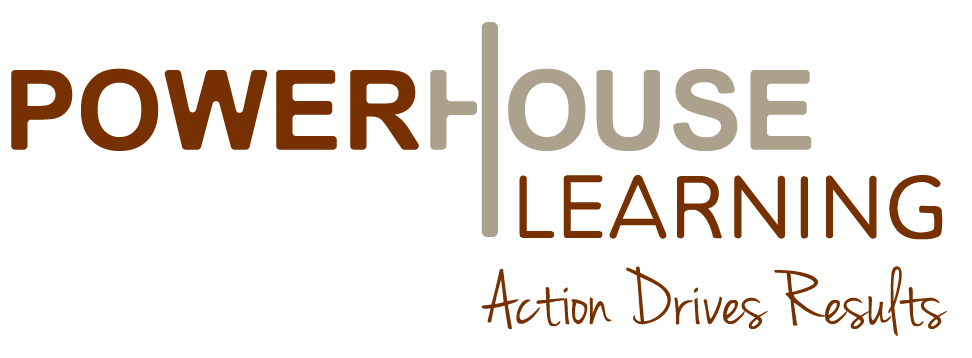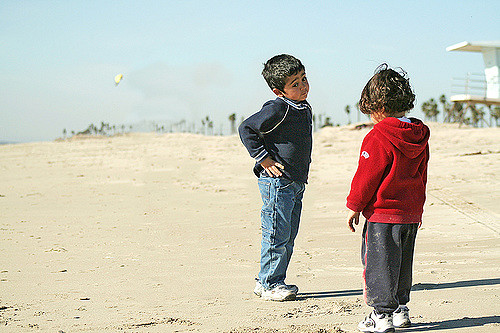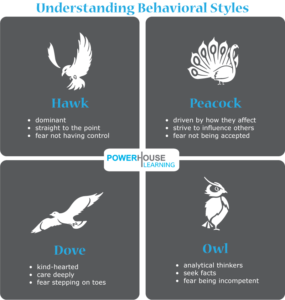Have you ever wondered if opposite people really do attract? Have you ever decided that you disliked someone only minutes after meeting them? There is a reason you feel that way, and some of it has to do with our own personal behavior styles, and the way we relate to those around us.
When I was in college I was asked to begin one of my classes by taking a Hermann Brain Dominance Test (HBDI ©). The test asked me a series of questions about how I see the world, my perspective on situations and people, and my natural tendencies. I recall something about the term “whole-brained”, referring to those that have the greatest balance in the 4 quadrants.
It’s been almost 30 years now, and I still remember my scores and what I learned about myself at that time. I took great interest in the scores and was pleased in my results, except for one category where I scored lower than the others. The test prompted my desire and motivation to do better, be more present, and boost the weakest score.
Since that time, I have taken and facilitated many of these self-assessments: Myers-Briggs, The Color Code, Personalysis, DiSC, Kolbe, one with animals like the Beaver, The Eagle and so forth. I have always had a fascination with what makes us do the things we do, think the way we do, and what stops us from overcoming our fears, obstacles, and unwillingness to grow.
One of the biggest mistakes I see in my field is trainers spending a lot of time helping participants understand who they are. When I instruct, I choose to spend less time on self and more time on others. Why? Because it is only when we consider the other that we can really strengthen our relationships, become a better professional (or better person, really), and reach our personal and professional goals.
To to that end, instead of self-reflection alone, I want to share a few of my experiences and de-bunk some of the myths both as a participant and as an instructor. I’d also like to share one of my favorite assessments; the one I often use in my instruction.
Here is how the four types of behavior styles are described, and how I like to share my information during training:
HAWKS are more dominant, straight to the point, get it done NOW kind of people. Their biggest fear? Not having control.
PEACOCKS are driven by how they affect and influence others. Their biggest fear? Not being accepted socially.
DOVES are kind-hearted people who deeply care about those around them, sometimes to their own detriment. Their biggest fear? Stepping on toes and having people not feel a part of a project.
OWLS are analytical thinkers who pick apart and seek facts above all else. Their biggest fear? Not being seen as competent and accurate.
HAWKS and OWLS are task-oriented thinkers,
PEACOCKS and DOVES are more people-oriented feelers.
HAWKS and PEACOCKS are more Extroverted, Loud, and Dominant in their approach.
OWLS and DOVES, however, are more Introverted, Soft Spoken, Less Confrontational in their approach.
Can you easily figure out which one you are? Maybe you’re finding that you can identify with several of these - and that’s OK. It’s actually normal to not be 100% one style -- we are complex individuals.
The next time you are in a group, glance around the room. Can you identify who is introverted and extroverted? With some people, you’ll have to spend a bit of time with them before you’ll be able to identify which they are. Here’s a clue: extroverts will doing most of the talking, introverts will be doing most of the listening (of course, there are always exceptions).
This is why we should think twice before judging, and think twice before reacting. It’s important to see the perspective of the other, and how they see the world. How others see the world around them is directly connected to how they will react when you present information, deal with a difficult conversation, or communicate an important topic.
Here are a few additional fun facts that relate to these behavior styles, to bring a better understanding of how we identify with each:
FUN FACT #1: 25% of the population is compartmentalized into one of each of these 4 quadrants. Some of us have a tendency to judge based on cultural and gender stereotypes, but these assumptions do not always prove true.
FUN FACT #2: Even though you may be more dominant in one area than another, that does not mean you exclude all other quadrants; we are all made up of a combination of all four categories.
FUN FACT #3: If you find you are very dominant in one category, remember that you will exclude 75% of the population if you stay stuck in your own area.
FUN FACT #4: See this process of adapting like the old age game of “Four Square”, which involved four boxes of equal size, and four kids each in their own box. We had to bounce the ball into areas outside our own box. In order to win, we had to quickly adapt based on the people around us with different perspectives.
FUN FACT #5: With enough effort, knowledge, practical application and focus, you CAN change your profile – I know because my scores look very different today than they did when I was 17.
FUN FACT #6: Once I learned more about the four types, I judged others less. For example, at work instead of me saying, “What a jerk!” or “MORE detail?? You’ve got to be kidding me!”, I now think about who is the the HAWK, OWL, PEACOCK, and DOVE in the office and how they are different or similar to my own type.
FUN FACT #7: Whichever style you are most dominant in, you have the toughest time with those directly diagonal from you. For some of you -- it’s your partner!
So, now what?!
How do we deal with those that are different from us? Well, for instance, when you’re in a group setting and someone is communicating in a demanding, difficult way, consider if they are a Hawk. Think about how they think, operate, and expect results. Is the person next to you talking on and on and on without hardly taking a breath? Perhaps a Peacock at the extreme. Is there a person quietly stubborn about knowing the best detail from the project? Maybe the Owl who desperately needs data to make informed decisions. And what about the nice person on your team who is almost too quiet when it comes to addressing change? I bet they are the Dove.
Instead of going to your own personal style, consider asking questions related to the how and what, thinking how they think or feel and how they are motivated.
Unsure? Here’s a tip: Ask that person, ”So, what do you think or how do you feel about that?” How they answer will reveal their pattern. Really listen for what comes next. It will how you a lot about how to approach the next step.
I often think about it this way: If you are speaking English and the person across from you is speaking a different language, you may want to consider learning a little of that language. We often do not visit another country expecting people to learn our language; we adapt. We get online, learn a language, download an app, etc. That is what I have done for our trip to Italy. I speak 4 other “romance” or Latin-derivative-based languages, but I wanted to get along better in Italy, so I downloaded a mobile app and am learning as much as I can before our trip.
Understanding behavior styles is no different. This all is critically important because we all see the world from the inside out. First, our beliefs, then our emotions, then thoughts, lastly behavior. If we can be open to listening to someone and how they see things differently than us, we can become better at communicating and being understood.
If you’d like to learn more about these behavior styles, there is an excellent video on the Powerhouse Learning YouTube channel. Enjoy getting to know yourself and others. I truly believe it matters when all of us have the choice to consider someone else’s point of view!


